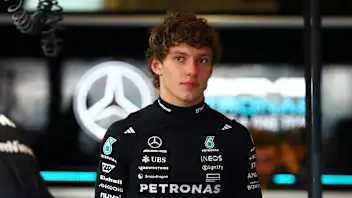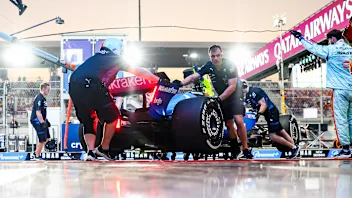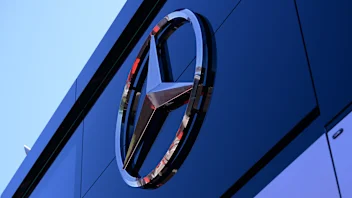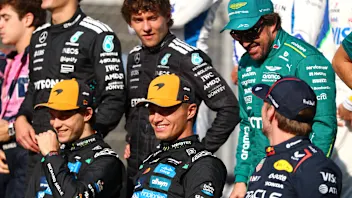From two street circuits it’s time for a return to a permanent track, so we take a look at the different strategic options ahead of today’s race at Circuit Paul Ricard.
What are the likely strategies for the frontrunners?
Whereas those in Azerbaijan all had to qualify on the soft compound in order to reach Q3, the complete opposite was true in France. The performance gap between the medium and soft tyre was not so big over one lap, and it was definitely not the tyre anyone wanted to start on, so with the longevity offered by the medium the whole top ten managed to qualify on mediums.
What To Watch For in the French GP: Potential fireworks at the front, and Tsunoda on a charge
So that makes a one-stop strategy the clear favourite for all of those in the top ten, not just the frontrunners. An opening stint of around 18-25 laps on the mediums will then open up the potential to switch to the hards and run to the end of the race, with the hard compound a good race tyre here.
Although Safety Cars are much less likely in Paul Ricard than either of the last two venues, if there were to be an early interruption then teams would still likely take the chance of a free pit stop before that lap 18 mark and employ some more tyre management, though some may gamble on the fact that clear air will be important.
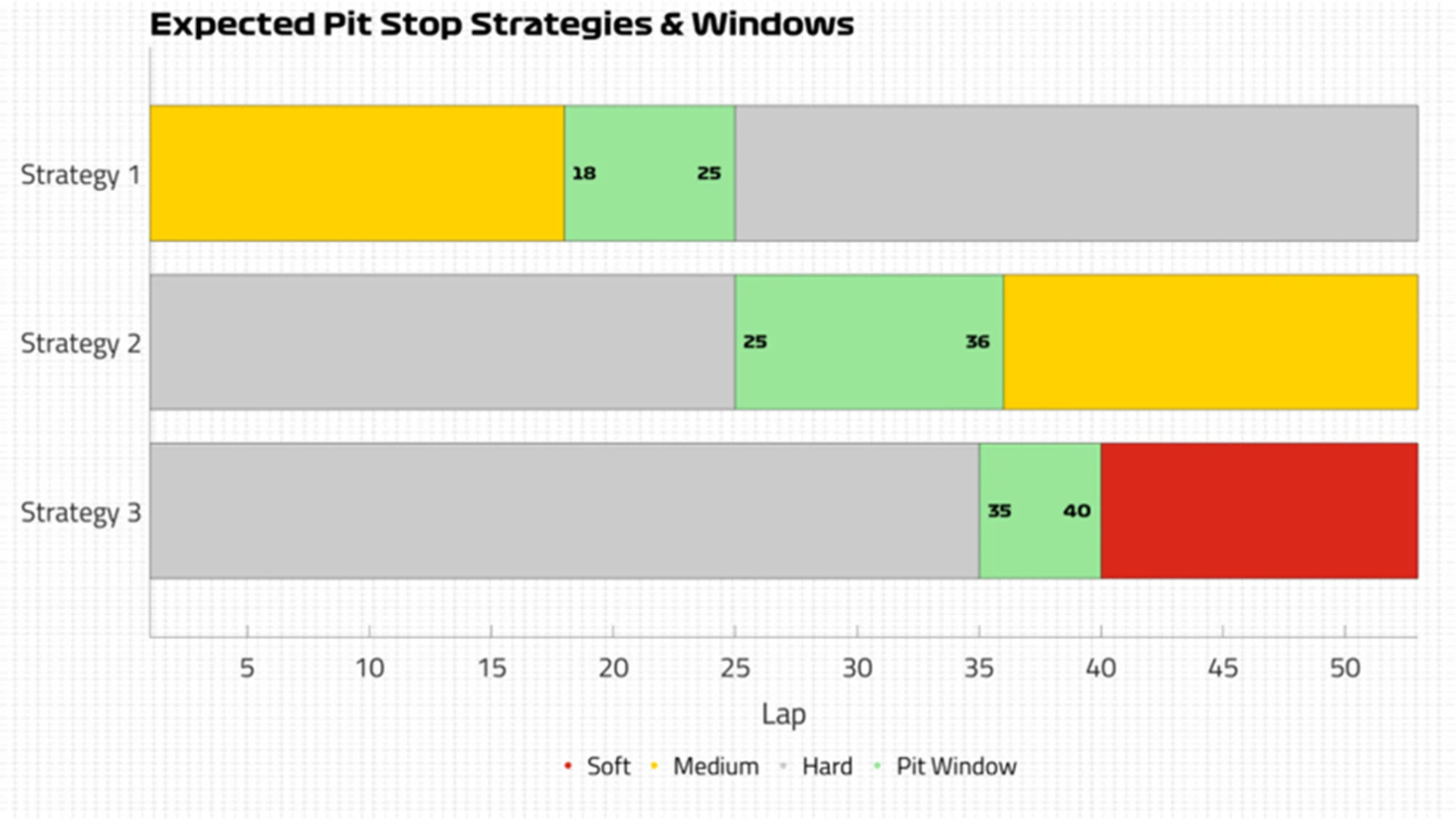
How about the rest of the top 10?
And clear air being important is just as crucial to those further back in the top ten. While the likes of Red Bull and Mercedes will set their own pace, there’s a bigger midfield fight going on between Ferrari, McLaren and Alpine.
With all except Esteban Ocon (who is 11th) starting on the mediums, the pace difference is unlikely to be enough for easy on track overtakes, and each team will be looking to strategy to try and gain a position.
QUALIFYING REPORT: Verstappen beats title rival Hamilton to pole in thrilling French GP qualifying
The undercut is a possibility, but getting caught in traffic on hard tyres when trying to warm them up could be difficult, so the first stint could end up being extended to try and clear certain cars further back in the pack.
In that first stint we could see the field spreading out a little to focus on their strategic options rather than wheel-to-wheel combat, because the slipstream effect is less important than at somewhere like Baku, and it’s more crucial to have clean air for the long, sweeping corners. When stuck behind another car, the air is disrupted so the drivers need to lean on the tyres even more for extra grip to stay close.
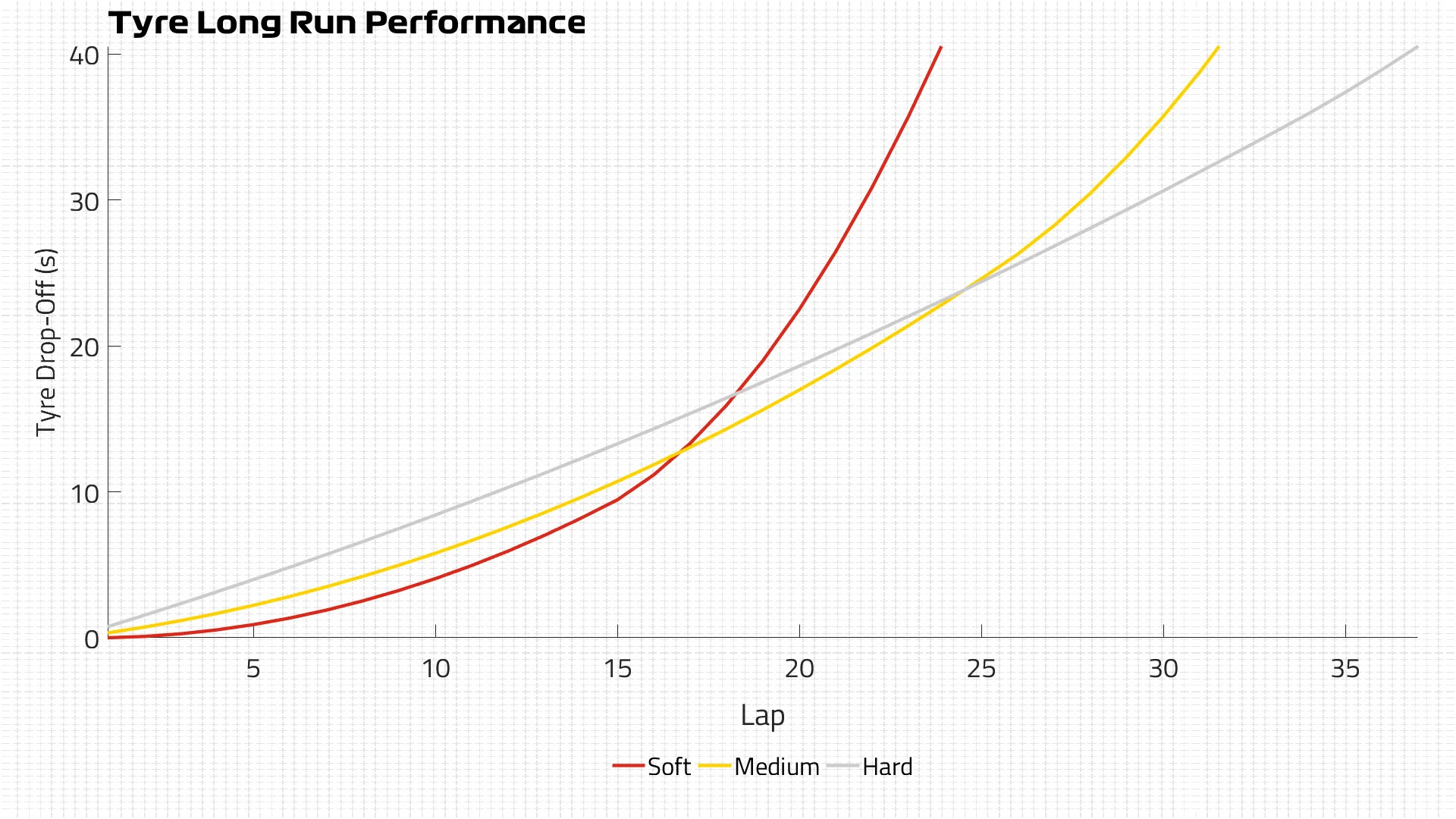
What are the options for the bottom half of the field?
Usually those outside the top ten would be hopeful of picking off some of those lining up in the points-paying positions when their softer tyres fell away in the first stint, but with the Q3 qualifiers all starting on mediums, that scenario is missing today.
And starting on the softs is not a viable option due to the lack of range offered by that tyre on high fuel. With lower temperatures expected for the race and the grip level lowered by some overnight rain, the softs are at risk of graining when the car is at its heaviest.
So the most likely alternative to the medium-hard strategy above is to start on the hards and run long. That is certainly attractive to Esteban Ocon and Yuki Tsunoda, because they will also get the data of the medium tyre from their respective team mates starting in the top ten, but even for the rest of the field the aim would be to get as far into the race as possible, with a switch to mediums opening up from around half distance.
If they can extend that opening sting on hards until close to lap 40, then opting for the soft compound is a possibility because the lighter car (due to the fuel load burning off) will reduce the risk of graining.
As pointed out above, clean air is also crucial. So for anyone running long on the hard compound, the strategy will only work if that allows them some free track to deliver their pace and not over-stress the tyres.
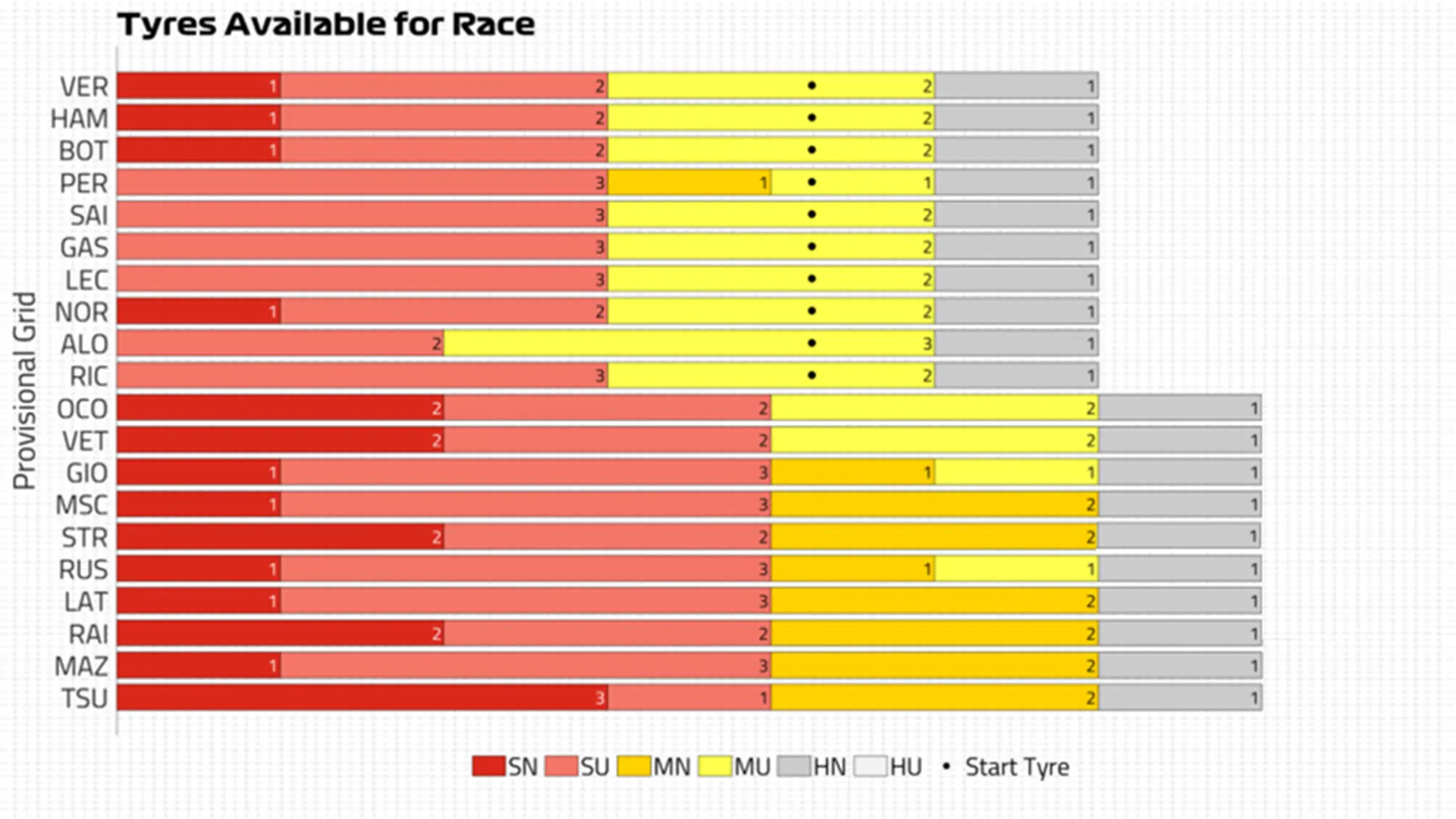
Wait, but what’s the weather doing?
After a few dry races, this is where things could get interesting this afternoon, as there is rain in the air at Paul Ricard. After a largely overcast day on Saturday, the first spots of rain started falling on Saturday evening, and there’s an outside chance of a wet track come the start of the race.
That would need some showers close to or after lights out, because it remains warm at the circuit, but Pirelli is confident in its wet weather range here because it uses Paul Ricard’s sprinkler system to artificially soak the track and conduct wet tyre testing.
HIGHLIGHTS: Watch all the action from qualifying for the French Grand Prix
From that knowledge and the temperatures, even a damp race start would see a dry line appearing very quickly, so the chances of a full wet race are even slimmer than the threat of any rain at all, but it would mean everyone starting on intermediates and wets would be looking to get to the point they could swap to hards and only make one pit stop.
The difficulty there is the hard tyre is not the best of the three options in damp conditions, so any further rain would really provide a strategic challenge rather than simplify things a little.
Next Up

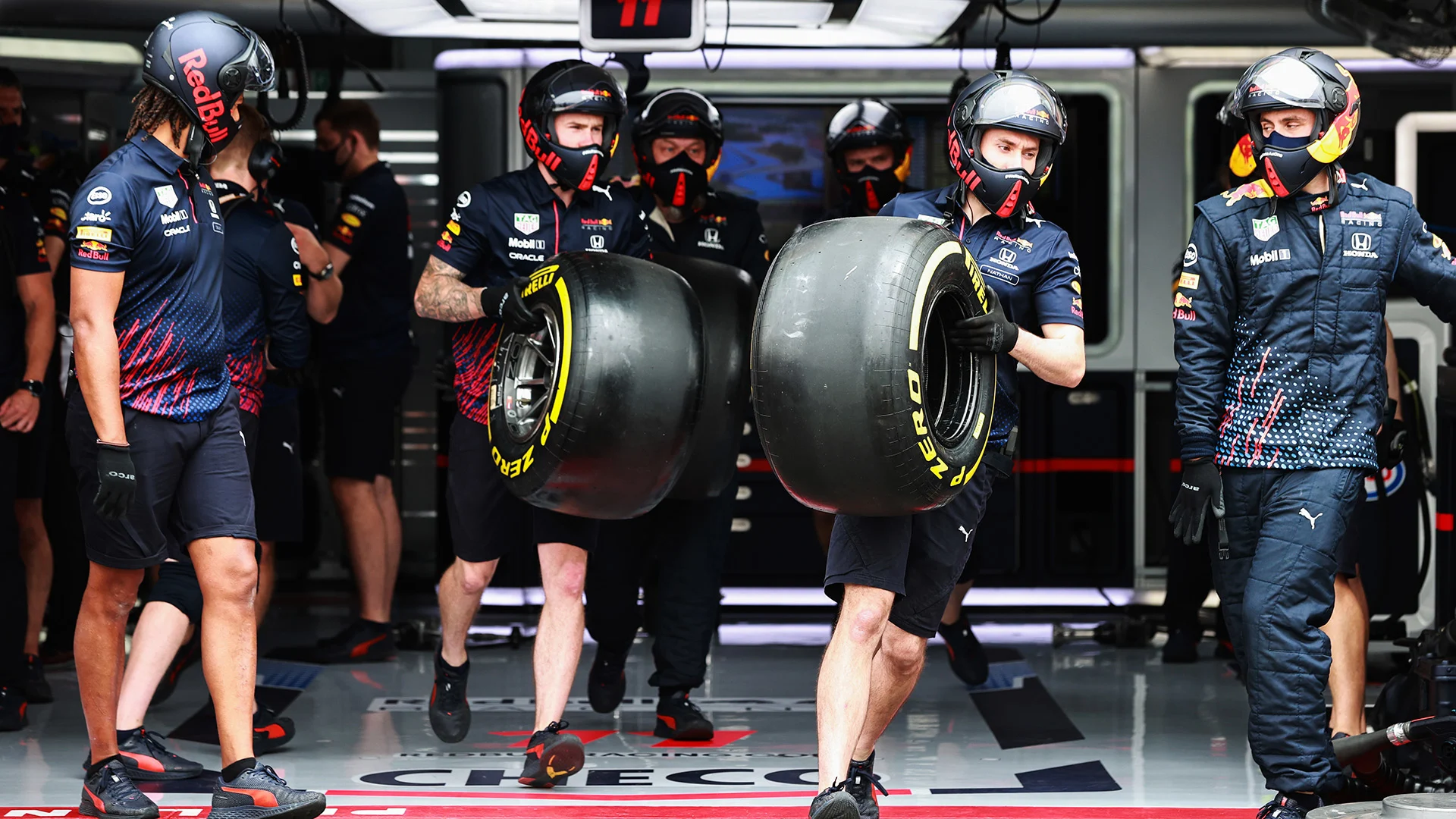
.webp)
